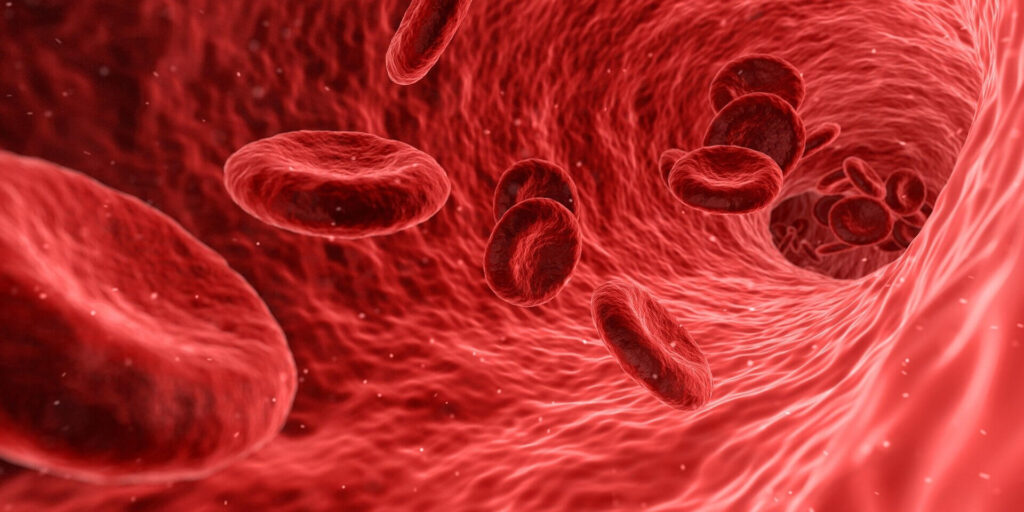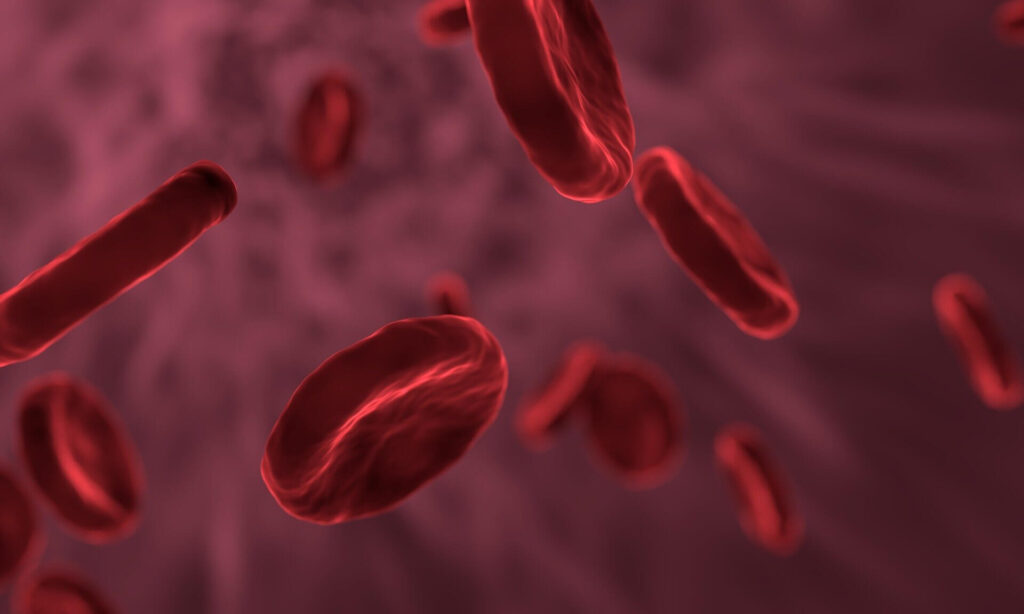The study of blood work has evolved over time. It is now a critical criterion that indicates the body’s capacity to function properly. Medical professionals interpret the blood’s biochemical indices to diagnose and identify existing problems and for early detection. The activity of each organ in the human body can be analyzed through singular and/or multiple biochemical indicators. Therefore, the determination of concentration and comparison of biochemical indices in blood components can help doctors diagnose diseases such as diabetes, dyslipidemia, etc. Of late, fitness enthusiasts and active individuals have taken an interest in some parameters to optimize their health and performance.

Highlights
- The activity of each organ in the human body can be analyzed through singular and/or multiple biochemical indicators. Therefore, the determination of concentration and comparison of biochemical indices in blood components can help doctors diagnose diseases such as diabetes, dyslipidemia, etc,
- Some of these are: glucose profile (fasting glucose, HbA1c and fasting insulin tests), lipid profile (through triglycerides, LDL and HDL cholesterol), micronutrients (vitamins, iron etc.) , hemogram (RBC, WBC and platelet counts), and kidney, liver and thyroid function. There are various tests to check these and different markers reveal different information about the state of your health.
In this article we try to understand some of the regular blood parameters that are checked as a part of your blood test.
Glucose profile
The carbs you eat are converted into glucose, a type of sugar your body uses as fuel. It’s essential for life, but too much glucose in the long term can cause diabetes or lead to heart/kidney disease. Blood glucose is regarded as one of the most convenient blood work biomarkers, as it correlates with cardiovascular threat, metabolic syndrome, dementia and a multitude of other chronic illnesses. Blood glucose matters, since chronically high levels will damage blood vessels and nerves through several distinct mechanisms. However, to be most valuable, glucose needs to be viewed dynamically, especially how it rises/falls in response to certain stimuli (e.g., diet, exercise, sleep).
- Fasting glucose: It is a measure of your blood sugar levels unaffected by a recent meal and can help identify problems with carbohydrate metabolism. 100 milligrams (mg) per decilitre (dL) is considered normal for a person’s fasting blood glucose level.
- HbA1c: Hemoglobin A1c, also called glycated hemoglobin, is hemoglobin with glucose attached. It’s a method to calculate the average blood glucose level over the course of the preceding 3 months; based on glycation, the procedure by which hemoglobin is attached to glucose molecules in red blood corpuscles (These tend to live for an average of three months, despite this value differing from person-to-person). The values expressed here are in the form of a percentage of glycated hemoglobin molecules. Even upon taking normal fasting blood sugar readings, an individual’s hemoglobin A1c can be beyond the average parameters, this is because the average sugar is measured, this includes the effects of food eaten throughout the day. The higher it is, the greater the glycemic excursions from optimal levels and the more risk for metabolic disease such as diabetes.
- Fasting insulin is the hormone that enables glucose from shuttling into the body’s cells. Fasting insulin is a measurement of insulin levels that remain unchanged by recently consumed meals and evaluates the production of insulin by the pancreas’s beta cells. It helps figure out the cause of abnormal blood glucose and helps identify insulin resistance. The human body, to the best of its ability, always strives to retain a fasting serum glucose within 100 milligrams (mg) per decilitre (dL), including raising the body’s insulin (that’s how the body creates insulin resistance!). Notwithstanding the fasting glucose, an individual would be required to have a simultaneous fasting insulin level, which would indicate the level at which the pancreas is functioning.
Lipid profile
The human body possesses the ability to break down lipid molecules and utilize them for its energy requirements. The lipid panel is a collection of tests that measures different types of your cholesterol.
- Triglycerides: It is a type of lipid stored in fat cells when calories/energy from food go unused. The main reason for high triglycerides is the refined carbohydrates and sugars in your diet. Triglycerides are responsible for storing extra calories/energy and providing your body with energy when it is needed. Triglycerides are regarded as crucial bio-marker to assess an individual’s insulin resistance and metabolic syndrome.
- LDL cholesterol: LDL (low-density lipoprotein) is the cholesterol that clogs blood vessels. It is referred to as the ‘bad’ cholesterol as it has the ability to transport lipids into the walls of the arteries walls and harden them. This value has to be below 100 mg/dL ideally.
- HDL cholesterol: HDL (high-density lipoproteins) are a type of complex made of proteins and fat that carry cholesterol in the blood. HDL particles remove lipids from cells and blood vessels. When the cholesterol is in the form of an HDL particle, it is often referred to as the “good” cholesterol as HDL seeks out and transports the LDL cholesterol molecules away from the arteries and back to the liver for redistribution, metabolism and elimination. Epidemiological studies have shown that higher concentrations of HDL (>60 mg/dL) are associated with reduced cardiovascular risk.

Micronutrients
- Vitamin B-12: This has always been considered as an important vitamin for a multitude of essential bodily functions, namely the blood cell production, brain health and proper nerve functioning. Low B-12 levels can lead to: permanent nerve damage, deteriorating brain functions, memory loss. Obese individual and/or individuals who consume a lot of meat also are more likely to have an above average Vitamin B-12 level. Above-average to High levels of the vitamin B-12 can possibly be an indicator of liver ailments, various types of leukemia and/or diabetic disorders. Vitamin B-12 deficiency is a common condition. Especially older adults and people with intestinal disorders, have trouble absorbing vitamin B-12 from food and oral supplements resulting in low vitamin B12 levels. Your body doesn’t naturally produce vitamin B-12. It derives from fish, meat and dairy. People who are at risk for vitamin B-12 deficiency are: older adults, children, vegans, strict vegetarians, people with diabetes, people who’ve had gastric bypass surgery. Medications that may also affect the body’s vitamin B-12 levels include: chloramphenicol, or chloromycetin, antacids (proton pump inhibitors/H2 receptor blockers), metformin, for diabetes.
- Iron: An iron profile consists of lab tests that analyze the level of iron in blood and substances known as Transferrin. The iron profile report is capable of estimating the capacity of the body’s cells to bind iron. It is used to detect anemia. There are multiple types of anemia wherein an iron profile test is the best method in order to detect the iron deficiency. This test also besides revealing an individual iron deficiency can also detect the iron overload. The test is used in combination with other investigations to evaluate heart disorders. Fatigue and headaches are symptoms of iron deficiency. In the event the iron profile test reflects an overload of iron it is used as an indicator of liver and heart damage. A result of low TIBC in the iron profile report could reflect a deficiency in the protein that transports the iron. Iron deficiency profile showing low ferritin levels depicts the low iron levels, reflecting anemia.
- Vitamin D: The Vitamin D test is a diagnostic assay that measures the levels of vitamin D present in the blood. Vitamin D, a fat-soluble vitamin, is a vital nutrient for people of all age groups and involved in numerous key functions in the human body. Vitamin D plays an important biological role such as the promotion of calcium uptake by osteocytes in order to strengthen joints, bones, fortification of the teeth, elevating nervous system activity, immunity boosting, ensuring sufficient brain power, increasing lung capacity and improvement of heart health. Vitamin D also supplements the functioning of the kidneys, improves the wellness of the liver through regulating a proper blood pH, besides regulating the functions of the thyroid gland. The vitamin D blood test is an indicator of the concentrations of vitamin D’s bi-products absorption i.e., 25-hydroxyvitamin D, in the human body. There are two essential types of vitamin D, which are critical for nutrition, namely vitamin D2, present in food sources and vitamin D3, which is synthesized from direct sunlight exposure and is also known as the ‘sunshine vitamin’. Within the human body, the above-mentioned vitamins are converted into calcidiol or 25-hydroxyvitamin D that is subsequently disseminated in the blood. The vitamin D test calculates the concentration of 25-hydroxyvitamin D, to determine if the person has adequate amounts of vitamin D or is deficient in the nutrient. Low levels indicate deficiency of vitamin D. When a person is diagnosed as vitamin D deficient, the medical practitioner prescribes supplements of vitamin D in appropriate doses to restore itslevels.
CBC/Hemogram
The CBC is a battery of tests which are intended to evaluate the circulated cells in the blood, which include RBCs, WBCs and PLTs. The CBC is capable of evaluating an individual’s overall health and the detection of a spectrum of ailments.
Red blood cell (RBC) tests:
- The RBC count reflects the actual number of RBCs in an individual’s blood sample. RBCs are the body’s mechanism of transporting oxygen from the lungs to the entire body. A low red blood cell count may indicate health disorders, such as blood loss and/or anemia.
- Hemoglobin is a measure of the total amount of the protein which carries Oxygen in the individual’s blood, which is a reflection of the total of RBCs in the individual’s blood.
- Hematocrit is a measure of the total percentage of an individual’s blood volume that comprises RBCs.
- RBC indices are helpful in gathering data on the physical features of the RBCs, wherein the Mean Corpuscular Volume (MCV) is a measure of the average RBC size. Mean Corpuscular Hemoglobin (MCH) is the measure of the average amount of hemoglobin in an individual’s RBCs. Mean Corpuscular Hemoglobin Concentration (MCHC) is a measurement of an individual’s average hemoglobin’s concentration within an individual’s RBCs. Red Cell Distribution Width (RDW) is a measurement of the variation within an individual’s RBCs.
White blood cell (WBC) tests:
- The WBC count is a count of the total number of white blood cells in your blood sample. WBCs are primarily effective to raise the body’s immunity, hence lower WBC counts may be an indication of an infection and/or an immune system problem. There are various types of WBC’s, wherein a blood differential test calculates the quantity of each type of WBCs namely: neutrophils, lymphocytes, monocytes, eosinophils and basophils.
Platelet tests:
- A platelet count is the number of an individual’s platelets as seen in a blood sample. The Platelets assist the body to clot blood. A low platelet count may result in too much bleeding and excessive levels may increase the risk of blood clots formation.
- Mean Platelet Volume (MPV) may be calculated through a CBC test wherein the average size of platelets are measured.
Kidney function
- Uric acid: Uric acid concentration is the basis for diagnosing and monitoring the treatment of some diseases such as gout, kidney disease. The uric acid concentration in the blood is generally heightened in the case of gout, heart failure, psoriasis, kidney failure, obesity, hypothyroidism, pre-eclampsia and other ailments.
- Creatinine: The serum creatinine is a bi-product of the degradation of muscle creatine phosphate wherein these creatinines are entirely filtered out through the kidneys. Serum creatinine usually is heightened in cases of certain ailments such as kidney failure, heart failure, hyperthyroidism, hypertension and gout. Serum creatinine usually decreases in cases of pregnant women, people with muscle atrophy, paralysis, using anti-epileptic drugs.
- Blood urea: Urea is the main degradation product of proteins in the body. Urea is filtered in the glomeruli to be expelled from the body through urine. Therefore, the Urea index will be the basis for assessing kidney function and kidney diseases. At the same time, it is also the basis for evaluating the level of protein in the diet. Blood urea is seen to increase in the case of patients with certain ailments and kidney diseases namely: glomerulonephritis, kidney stones, kidney failure, ureteral stones, dehydration due to high fever, diarrhea, tubular inflammation, congestive heart failure etc. The decline in the body’s blood urea is often caused by a protein deficient diet, fluid transfusion, pregnant women, nephrotic syndrome and an impaired liver function, which leads to a decline in the synthesis of urea.
- Serum electrolytes: Electrolytes are minerals which are present in the blood and body tissues. They are essential for metabolism, proper nerve and muscle functioning, maintenance of proper water balance and proper blood pH (acid-base balance). The serum electrolyte test includes a group of tests to measure the following electrolytes: sodium (Na+), potassium (K+) and chloride (Cl-). The concentration of Sodium in the blood decreases in cases of fluid retention due to renal failure, heart failure, cirrhosis, or sodium loss due to vomiting, hemorrhage, diarrhea, burns, etc. The concentration of Sodium in the blood usually increases in cases of hyperemia. aldosterone, drugs containing corticosteroids, dehydration. The concentration of potassium in the blood usually decreases with diarrhea, vomiting. This concentration of potassium in the blood increases in case of renal failure, metabolic enzyme inhibitors, medication (potassium-sparing diuretics). Chloride concentration usually increases in cases of eating salty foods, kidney failure, coma, metabolic acidosis, anaphylaxis and this concentration usually decreases with prolonged vomiting (pyloric stenosis), diarrhea, dehydration.
Liver function
- Liver function tests are blood tests used to help diagnose and monitor liver disease or damage. These tests are used to measure the quantities of certain specific enzymes and proteins within an individual’s blood. The liver function test may be used for: screening the body for liver infections, like hepatitis, monitor the a disease progression, like viral and/or alcoholic hepatitis and to determine how well a particular treatment is working, measure the severity and intensity of a disease, particularly the scarring of the body’s’ liver (also known as liver cirrhosis), monitor possible side effects of pharmaceutical medication. Some general liver function tests include:
- Alanine transaminase (ALT): ALT is the enzyme found within the liver that assists in the conversion of proteins into energy for the body’s liver cells. When the liver is injured, ALT is released into the bloodstream and levels increase.
- Aspartate transaminase (AST): AST is an enzyme that helps metabolize amino acids. Like ALT, AST is normally present in blood at low levels. An increase in AST levels may indicate liver damage, disease or muscle damage.
- Alkaline phosphatase (ALP): ALP is an enzyme found in the liver and bone and is important for breaking down proteins. Higher-than-normal levels of ALP may indicate liver damage or disease, such as a blocked bile duct, or certain bone diseases.
- Albumin and total protein: Albumin is one of several proteins made in the liver. Your body needs these proteins to fight infections and to perform other functions. Lower-than-normal levels of albumin and total protein may indicate liver damage or disease.
- Bilirubin: Bilirubin is a substance produced during the normal breakdown of red blood cells. Bilirubin passes through the liver and is excreted in stool. Elevated levels of bilirubin (jaundice) might indicate liver damage or disease or certain types of anemia.
- Gamma-glutamyltransferase (GGT): GGT is an enzyme in the blood. Higher-than-normal levels may indicate liver or bile duct damage.
Thyroid function
- The thyroid gland is a butterfly-shaped endocrine gland that is normally located in the lower front of the neck. The thyroid’s job is to make thyroid hormones, which are secreted into the blood and then carried to every tissue in the body. Thyroid hormones help the body use energy, stay warm and keep the brain, heart, muscles and other organs working as they should.
- The major thyroid hormone secreted by the thyroid gland is thyroxine, also called T4 because it contains four iodine atoms. To exert its effects, T4 is converted to triiodothyronine (T3) by the removal of an iodine atom. This occurs mainly in the liver and in certain tissues where T3 acts, such as in the brain. The amount of T4 produced by the thyroid gland is controlled by another hormone, which is made in the pituitary gland located at the base of the brain, called thyroid stimulating hormone (abbreviated TSH).
- The amount of TSH that the pituitary sends into the bloodstream depends on the amount of T4 that the pituitary sees. If the pituitary sees very little T4, then it produces more TSH to tell the thyroid gland to produce more T4. Once the T4 in the bloodstream goes above a certain level, the pituitary’s production of TSH is shut off. In fact, the thyroid and pituitary act in many ways like a heater and a thermostat. When the heater is off and it becomes cold, the thermostat reads the temperature and turns on the heater. When the heat rises to an appropriate level, the thermostat senses this and turns off the heater. Thus, the thyroid and the pituitary, like a heater and thermostat, turn on and off.
- High TSH usually indicates underactive or Low thyroid function, while low TSH usually indicates overactive or high thyroid function, both can cause symptoms accordingly.
- The finding of an elevated TSH and low T4 indicates primary hypothyroidism due to disease in the thyroid gland. A low TSH and T4 indicates hypothyroidism due to a problem involving the pituitary gland. A low TSH with an elevated FT4 or FTI is found in individuals who have hyperthyroidism.
- These tests are indicative of what is occurring within a dynamic system. A person’s thyroid testing results may vary often and may not always indicate a health problem which needs to be correlated with your healthcare provider.
Conclusion
As we can see, blood chemistry is highly complex and contains answers to many health-related questions. There are many ways of testing various components of the blood. These tests are used to detect diseases effectively and even for early diagnosis.
Disclaimer: The contents of this article are for general information and educational purposes only. It neither provides any medical advice nor intends to substitute professional medical opinion on the treatment, diagnosis, prevention or alleviation of any disease, disorder or disability. Always consult with your doctor or qualified healthcare professional about your health condition and/or concerns before undertaking a new healthcare regimen including making any dietary or lifestyle changes.
References
- https://www.ncbi.nlm.nih.gov/pmc/articles/PMC5638475/
- https://www.thepermanentejournal.org/issues/2015/fall/5945-insulin-resistance.html
- https://www.hindawi.com/journals/mi/2019/9213074/
- https://journals.plos.org/plosone/article?id=10.1371/journal.pone.0172027
- https://www.ncbi.nlm.nih.gov/books/NBK482489/








